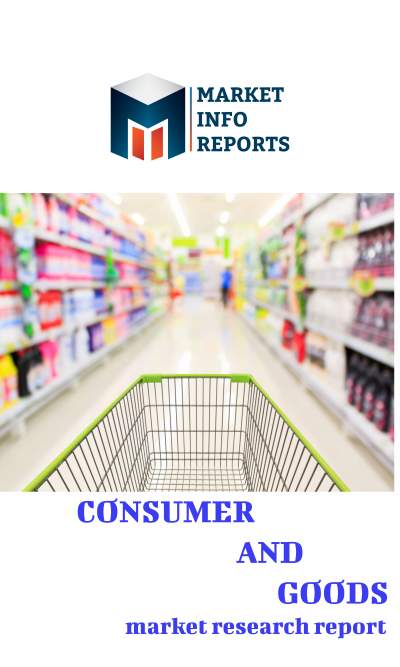
Cleansing Water Market Status and Trend Analysis 2017-2026 (COVID-19 Version)
Publisher : 99Strategy | Format : Electronics PDF
Cleansing Water Market
SummaryFurther key aspects of the report indicate that:
Chapter 1: Research Scope: Product Definition, Type, End-Use & Methodology
Chapter 2: Global Industry Summary
Chapter 3: Market Dynamics
Chapter 4: Global Market Segmentation by region, type and End-Use
Chapter 5: North America Market Segmentation by region, type and End-Use
Chapter 6: Europe Market Segmentation by region, type and End-Use
Chapter 7: Asia-Pacific Market Segmentation by region, type and End-Use
Chapter 8: South America Market Segmentation by region, type and End-Use
Chapter 9: Middle East and Africa Market Segmentation by region, type and End-Use.
Chapter 10: Market Competition by Companies
Chapter 11: Market forecast and environment forecast.
Chapter 12: Industry Summary.
The global Cleansing Water market has the potential to grow with xx million USD with growing CAGR in the forecast period from 2021f to 2026f. Factors driving the market for @@@@@ are the significant development of demand and improvement of COVID-19 and geo-economics.
Based on the type of product, the global Cleansing Water market segmented into:
Oily Skin
Dry Skin
Combination Skin?
Other
Based on the end-use, the global Cleansing Water market classified into:
Male
Female
Based on geography, the global Cleansing Water market segmented into:
North America [U.S., Canada, Mexico]
Europe [Germany, UK, France, Italy, Rest of Europe]
Asia-Pacific [China, India, Japan, South Korea, Southeast Asia, Australia, Rest of Asia Pacific]
South America [Brazil, Argentina, Rest of Latin America]
Middle East & Africa [GCC, North Africa, South Africa, Rest of Middle East and Africa]
The major players included in the report are:
Helena Rubinstein
Lancome
LOreal Paris
shu uemura
Olay
Estée Lauder
Clinique
Innisfree
HERA
Guerlain
Related Reports

Rubberised Coir Mattress Market Outlook 2023: Overview, Opportunities, Key Companies and Forecast to 2030
In the past few years, the Rubberised Coir Mattress market experienced a huge ch...

Robot Window Cleaner Market Outlook 2023: Overview, Opportunities, Key Companies and Forecast to 2030
In the past few years, the Robot Window Cleaner market experienced a huge change...

Reverse Osmosis Filter Market Outlook 2023: Overview, Opportunities, Key Companies and Forecast to 2030
In the past few years, the Reverse Osmosis Filter market experienced a huge chan...

Retro-Reflective Label Market Outlook 2023: Overview, Opportunities, Key Companies and Forecast to 2030
In the past few years, the Retro-Reflective Label market experienced a huge chan...





